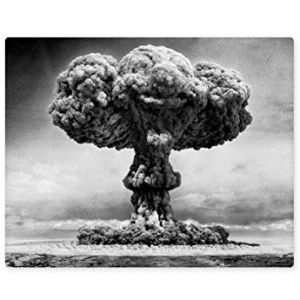
Herem (Absolute Destruction)
We’ve seen it multiple times and we will see it again. “It” is that very unsettling moment when God’s people are commanded to totally destroy every thing, animal and human in a particular city or battle. Even though I have read these accounts many times my discomfort with the idea only grows as I think about the noncombatants being slaughtered in their streets and homes. What gives? Why would God require such a horrible thing?
Well, as I said last week, what I have to share will not make the act any less tolerable to our Western sensitivities, but it may help us better understand what was in their hearts and minds.
It is helpful to remember that the land promised to Abraham’s offspring was inhabited by many different groups of people (Hittites, Amorites, Canaanites, etc) and these different groups lived in city states, each city being ruled by a king. Though independent and at times at war with each other, these kings could easily join forces if a common enemy approached.
Deuteronomy 20:16-17 is where we find the clear command to engage certain cities with the Hebrew word, herem, or absolute destruction. People outside the Promised Land were given an opportunity for peace and were not totally destroyed (Deuteronomy 20:10-15) but those within the Promised Land were to be totally wiped off the map. Why?
The answer begins in Genesis 15:16. Here, God said to Abraham, “After four generations your descendants will return here to this land, for the sins of the Amorites do not yet warrant their destruction” (NLT). So, one part of the herem command has to do with God’s divine punishment for their sin. But this is not all.
Deuteronomy 7:1-6 and 16 reveals that herem was necessary so that God’s people could remain holy and not adopt the pagan practices of those currently in the land. Verse 16 summarizes it this way. “You must destroy all the peoples the Lord your God gives over to you. Do not look on them with pity and do not serve their gods, for that will be a snare to you” (See also Exodus 34:10-17 and the extra warning to them in Numbers 33:55-56!).
Another reason is found in the purpose of these battles. When it came to taking possession of the Promised Land the herem command reminded the Israelites that the warfare was for their inheritance and not to make them wealthy through plunder. When the soldiers failed to carry out herem it was always because of greed and not mercy (see Achan in Joshua 7:20-21 and Saul in 1 Samuel 15:9).
So, God sent the Israelites to absolutely destroy those whose sins had come to “full measure”, to preserve the holiness of His people by protecting them from Canaanite pagan practices and to remind them that this was for their inheritance and not for their personal gain. Okay, we understand this. But how did this play out…really?
Well, it was one thing for the Israelite army to sweep through the land and conquer city after city; it was quite another to actually dispossess the people from that land. Scripture is clear that, for a number of reasons, they were not able to fully remove all the people which meant that the Canaanites would be their long-term neighbors (See Joshua 13:12-13; 15:63; 16:10; 17:12-13). As predicted, this will eventually lead to them merging pagan practices with the LORD’s commanded practices (called syncretism). This mixing of God’s command with cultural practice is a temptation faced by every generation, including our own (check out my earlier blog in “Syncing Faith” for more).
Does the existence of herem prove that God is a moral monster and that the God of the Old Testament is different from the God of the New? Paul Copan deals with this question in his book, Is God a Moral Monster: Making Sense of the Old Testament God so I’ll let him tackle that question for you.
As for me, I anchor my understanding of God to His own self-revelation in Exodus 34:6-7. This compassionate and gracious, slow to anger and abounding in love, faithfulness and forgiveness God is the same God who would not allow his beloved David to build a Temple for His Name because David was a man who shed much blood (1 Chronicles 22:8). God did not enjoy herem, but for a certain period of time He commanded it for a reason.
Speaking of that, there is one more reason for herem that I think needs to be shared. We know that the Old Testament is filled with shadows of what will one day become more clear. Adam’s sin, Noah’s Ark, Abraham’s faith, the exodus from Egypt, the tabernacle, the wilderness wanderings and other things are all signs that point beyond themselves to a reality far bigger than they could contain (types that point to an archetype). Herem is one of these incomplete pictures that points us toward a more perfect picture of what is to come.
Along with the reasons mentioned above, the presence of herem in the Old Testament also provides a strong metaphor for God’s mighty acts in salvation history which will one day result in the absolute destruction of all who oppose Him and the full establishment of his kingdom. It is a kingdom where justice and peace reign and where God Himself “will wipe away every tear from their eyes” and where “there will be no more death or mourning or crying or pain” (Revelation 21:3-4). It is here that we live in the presence of God free from the penalty, power and even the presence of sin. This is God’s ultimate Promised Land for His people; it is His kingdom that will come!
I love how this story always ties together. While it covers many years and employed many scribes, there is still but one Author.
Enjoying the journey with you,

Rob Eyman






